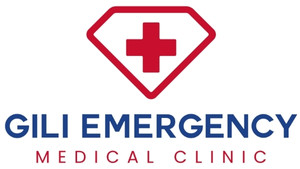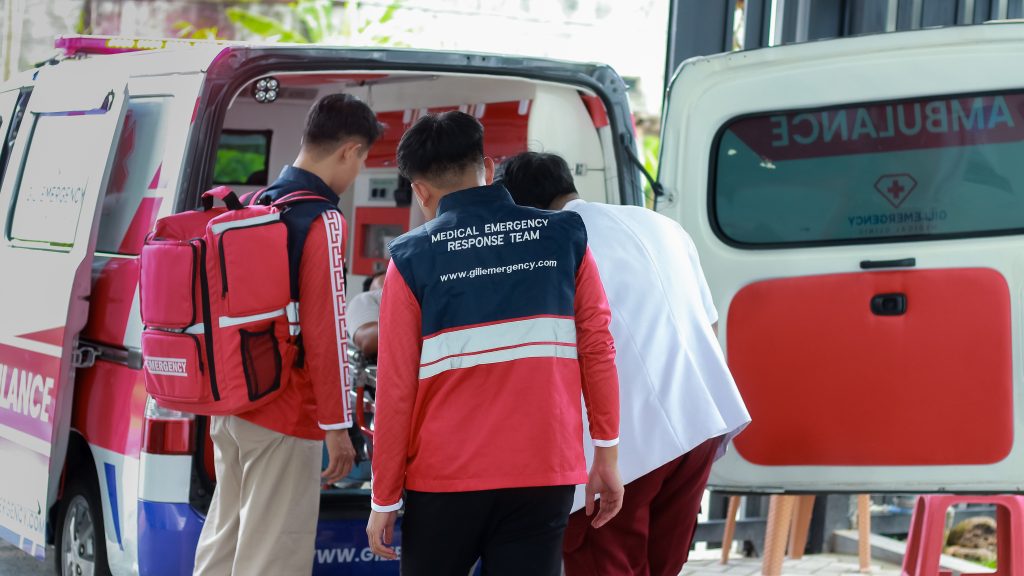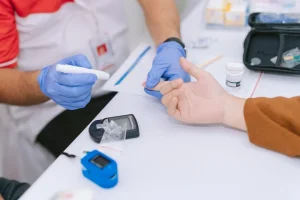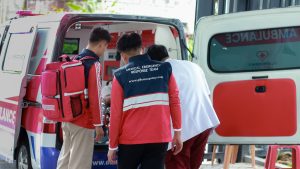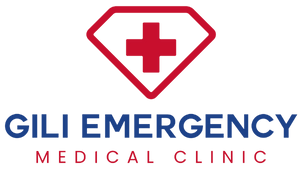Imagine this — soft white sand between your toes, the turquoise sea glistening under the sun, the sound of waves gently hitting the shore. Welcome to Gili Trawangan. It’s paradise, right? But even paradise isn’t immune to the unexpected. A diving accident, a sudden illness, or a scooter mishap can turn a dreamy holiday into a race against time. That’s when Gili T medical evacuation, Ambulance Gili, and Gili emergency service become absolute lifesavers.
In this article, we’ll talk about everything you need to know — conversationally, like chatting with a friend — about how medical evacuation works on Gili Trawangan, and how to be fully prepared before you need it.
What Is “Gili T Medical Evacuation” and Why Does It Matter?
When people hear medical evacuation, they often imagine a city ambulance. But on Gili Trawangan, things are different. There are no cars, no hospitals, and no quick road access to medical centers. The only way off the island is by sea, which makes the process of Gili T medical evacuation unique — and incredibly important.
Here’s the reality:
-
Local clinics can handle minor issues — dehydration, small wounds, flu, or stomach trouble.
-
But for serious cases like fractures, heart attacks, diving-related decompression illness, or trauma, the patient must be transported to Lombok or even Bali.
-
This is where the Ambulance Gili system and the Gili emergency service team take over — coordinating both sea and land evacuation to ensure the patient gets advanced medical care as fast as possible.
To put it simply: Gili T medical evacuation is a life-saving chain — from island clinic to speedboat ambulance to hospital on the mainland. Every link in that chain counts.
Inside the System: How “Ambulance Gili” and “Gili Emergency Clinic” Work
Let’s make it simple and clear.
Ambulance Gili — The Floating Lifeline
On Gili T, ambulance doesn’t mean a van with flashing lights — it means a specially equipped speedboat designed to move patients safely across the water. These “sea ambulances” come with:
-
Oxygen tanks and emergency kits
-
Stretchers and monitoring equipment
-
Trained paramedics or doctors on board
Once the patient reaches Bangsal Harbor in Lombok, a land ambulance takes over and brings them to a hospital in Mataram or even to a helicopter transfer if needed.
Gili Emergency Clinic — Your First Point of Care
The Gili emergency clinic (like Gili Emergency Medical Clinic) operates 24/7 on Gili Trawangan, Gili Air, and Gili Meno. They provide:
-
General consultations and urgent care
-
First aid and stabilization
-
Insurance handling and documentation
-
Direct coordination with Ambulance Gili for evacuation
They’re your “on-island hospital” — ready to handle the first critical minutes of any emergency before transfer.
Gili Emergency Service — The Island’s Safety Network
This broader term includes the entire emergency response ecosystem:
-
On-call doctors and paramedics
-
Hotel and resort emergency coordination
-
Evacuation logistics (sea + land + sometimes air)
-
Insurance and repatriation support
So when you hear “Gili emergency service”, think of it as the team that connects all the dots during a medical emergency — calmly and professionally.
Why Gili Trawangan Requires a Unique Medical Evacuation System
Because Gili T is stunning — and isolated. No roads, no cars, no hospitals. Just bicycles, electric scooters, and boats.
Here’s why Gili T medical evacuation is non-negotiable:
-
Limited on-island medical facilities: Local clinics are excellent for basic care, but serious cases need mainland hospitals.
-
Ocean access only: Every emergency transfer means a sea crossing first.
-
High-risk holiday activities: Diving, snorkeling, biking — they’re fun but can lead to injuries.
-
Time is everything: For stroke, heart attack, or trauma, delays can change everything.
That’s why clinics like the Gili emergency clinic and Ambulance Gili are available 24/7 — because emergencies don’t wait for office hours.
Step-by-Step: What to Do If You Need a Gili T Medical Evacuation
When an emergency happens, every minute matters. Here’s what to do — clearly, calmly, confidently.
1. Recognize an Emergency
If you or someone near you experiences:
-
Severe chest pain or shortness of breath
-
Sudden loss of consciousness or stroke symptoms
-
Serious accident or bleeding
-
Diving-related sickness (pain, dizziness, paralysis)
-
Allergic reactions or breathing problems
→ It’s time to call the Gili emergency clinic right away.
2. Call the Gili Emergency Clinic or Service
Example:
Gili Emergency Clinic (24/7): +62 823-1211-2112
They’ll ask for the patient’s location (hotel, villa, or beach), symptoms, and any known medical conditions.
Tip: Save this number in your phone before your trip.
3. Activate the Ambulance Gili Team
Once the clinic confirms it’s serious, they’ll dispatch a medical speedboat — your Ambulance Gili. The onboard medical team stabilizes the patient during the crossing.
When the boat arrives at Bangsal Harbor, a land ambulance is already waiting to continue the evacuation.
4. Coordinate With Insurance
If you have travel insurance that includes emergency medical evacuation, the clinic staff will help handle paperwork and claims. Most major insurers cover this, but always confirm before your trip.
5. Prepare Basic Info
Keep ready:
-
Passport or ID
-
Insurance policy details
-
Emergency contact
-
Any allergies or ongoing medication
6. After Evacuation
Once stabilized, patients are usually transferred to a major hospital in Lombok or Bali. The Gili emergency service team follows up with reports, updates, and insurance documents.
Practical Tips: Stay Safe and Prepared on Gili Trawangan
A relaxed trip doesn’t mean careless travel. Here are a few pro tips so you won’t need to test the Gili T medical evacuation system yourself:
-
Get travel insurance that covers “emergency medical evacuation” and “repatriation.”
-
Save the clinic number of the Gili emergency service in your phone.
-
Inform your hotel staff about your insurance and emergency contact.
-
Ride carefully — many accidents happen because visitors underestimate the sandy, uneven roads.
-
Be mindful when diving or snorkeling. Avoid overexertion, hydrate well, and always dive with licensed operators.
-
Learn where the Gili emergency clinic is located. Even just knowing the direction can save time.
-
Stay hydrated and respect your limits. Sun and dehydration are sneaky causes of fainting and fatigue on the islands.
Little steps like these make a big difference when things go wrong.
A Real-Life Scenario: How Gili T Medical Evacuation Works in Action
Let me paint a picture for you.
A few months ago, a traveler named Mark was enjoying a dive near Shark Point off Gili T. After surfacing, he felt dizzy and had pain in his chest — classic signs of decompression sickness. His dive instructor immediately called the Gili emergency clinic.
Within minutes, a team arrived with oxygen and checked his vitals. They quickly decided it was serious and activated Ambulance Gili — a medical speedboat equipped with oxygen tanks and monitors. The crossing to Lombok took around 20 minutes, and a waiting land ambulance drove him straight to a hospital with a decompression chamber.
Mark recovered fully. Later he said, “If they weren’t that fast, things could’ve gone really bad.”
That’s how Gili emergency service quietly saves lives every week — professional, fast, and prepared for anything.
Why Knowing About Gili T Medical Evacuation Gives You Peace of Mind
Knowing how Gili T medical evacuation, Ambulance Gili, and Gili emergency service work doesn’t mean expecting disaster — it means being smart.
Just as you pack sunscreen or a swimsuit, a little awareness about the island’s emergency system gives you a sense of safety and control. And ironically, that calmness lets you enjoy your vacation even more.
So next time you’re walking barefoot on the sand, sipping your coconut, watching the pink sunset — take one small action:
Save the emergency number, check your insurance, and know that the Gili emergency clinic is just a call away.
Because in paradise, being prepared is the most relaxing thing you can do.
